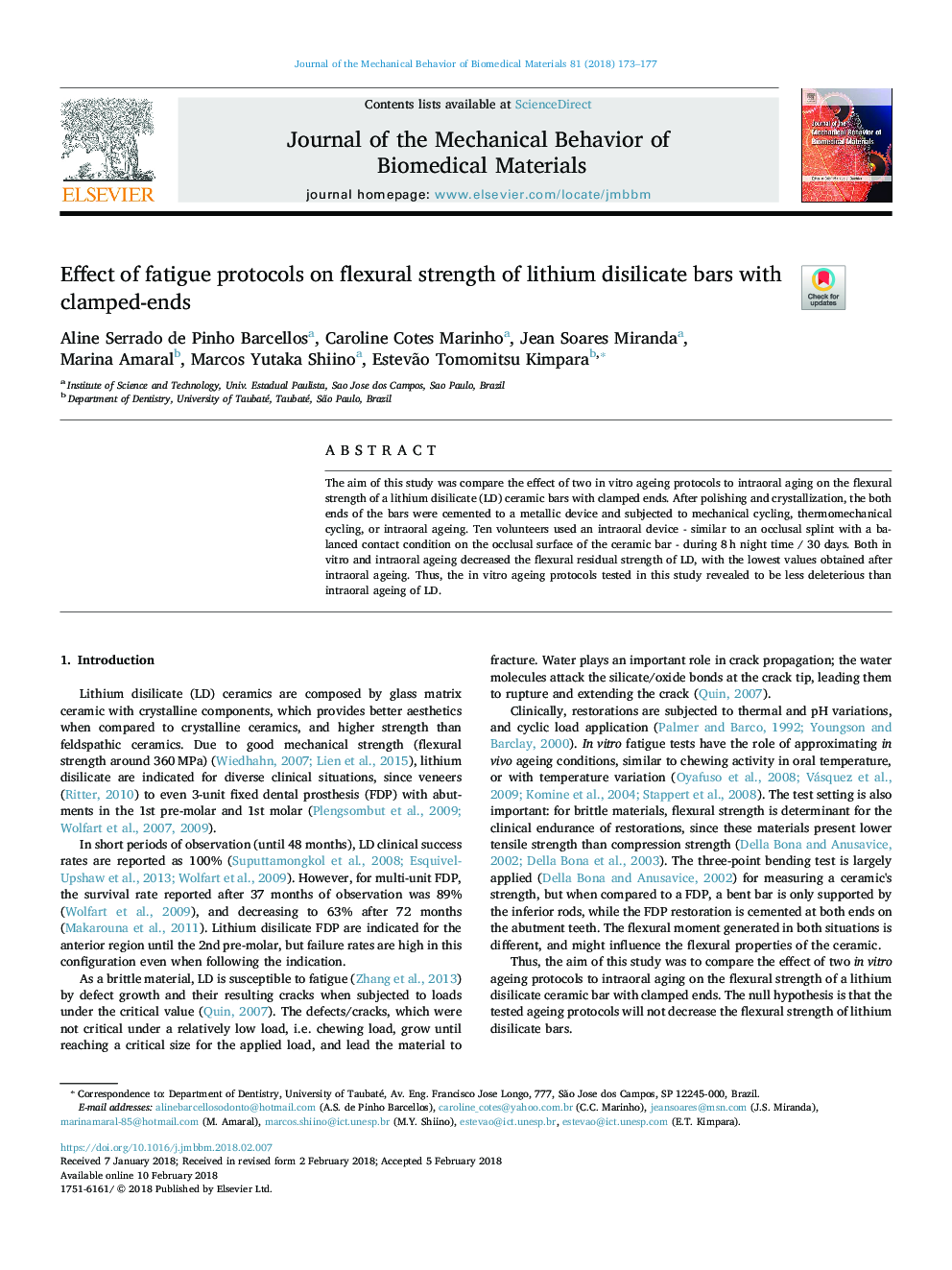| Article ID | Journal | Published Year | Pages | File Type |
|---|---|---|---|---|
| 7207122 | Journal of the Mechanical Behavior of Biomedical Materials | 2018 | 5 Pages |
Abstract
The aim of this study was compare the effect of two in vitro ageing protocols to intraoral aging on the flexural strength of a lithium disilicate (LD) ceramic bars with clamped ends. After polishing and crystallization, the both ends of the bars were cemented to a metallic device and subjected to mechanical cycling, thermomechanical cycling, or intraoral ageing. Ten volunteers used an intraoral device - similar to an occlusal splint with a balanced contact condition on the occlusal surface of the ceramic bar - during 8â¯h night time / 30 days. Both in vitro and intraoral ageing decreased the flexural residual strength of LD, with the lowest values obtained after intraoral ageing. Thus, the in vitro ageing protocols tested in this study revealed to be less deleterious than intraoral ageing of LD.
Related Topics
Physical Sciences and Engineering
Engineering
Biomedical Engineering
Authors
Aline Serrado de Pinho Barcellos, Caroline Cotes Marinho, Jean Soares Miranda, Marina Amaral, Marcos Yutaka Shiino, Estevão Tomomitsu Kimpara,
